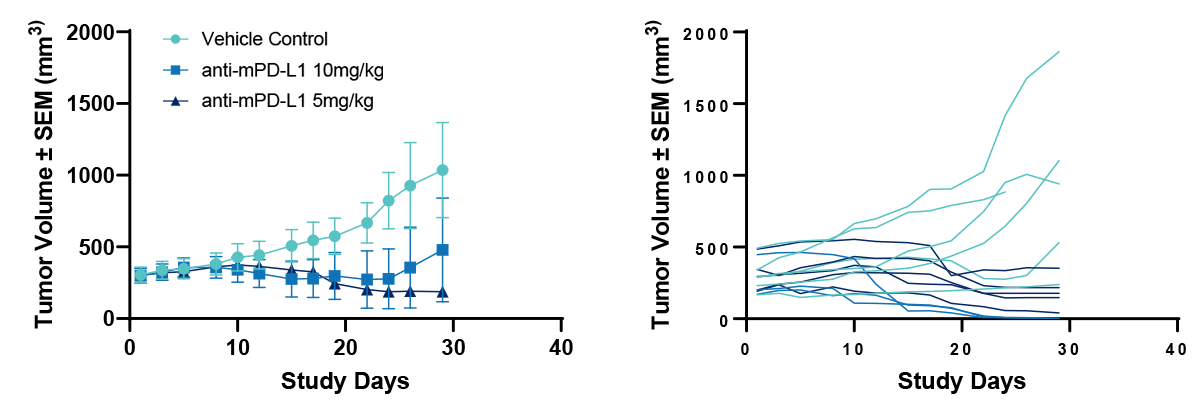Hepa 1-6 Syngeneic Model
Synonyms: Hepa1-6, Hepa1/6, Hepatoma 1-6, Hepatocellular carcinoma 1-6
Hepa 1-6 is a widely studied cancer cell line derived from a murine hepatocellular carcinoma (HCC). It serves as a valuable tool in HCC research, facilitating investigations into tumor biology, therapeutic interventions, and drug responses. Hepa 1-6 cells exhibit characteristics resembling human HCC, making them suitable for studying the disease. They are frequently used to explore genetic alterations, signaling pathways, immune responses, and drug sensitivity in HCC research. The cell line is extensively employed in preclinical models to evaluate the efficacy of different treatment approaches, including chemotherapy, targeted therapies, and immunotherapies. Hepa 1-6 plays a crucial role in enhancing our understanding of HCC and developing novel strategies for its diagnosis and treatment.
Model Details
Cancer Type: Liver Cancer
Model Name: Hepa 1-6
Mouse Strain: C57BL/6
Treatment Data Available: aPD-L1
Hepa 1-6 Growth Curves: Response to a PD-L1

Growth of subcutaneous Hepa 1-6 in C57BL/6 mice (n=10). Response to aPD-L1 dosed Q3Dx4.
Request Additional Syngeneic Model Data
CONTACT US
Get Started.
Have questions about how TD2 can assist with your regulatory needs? Reach out to our expert staff today to get started.


